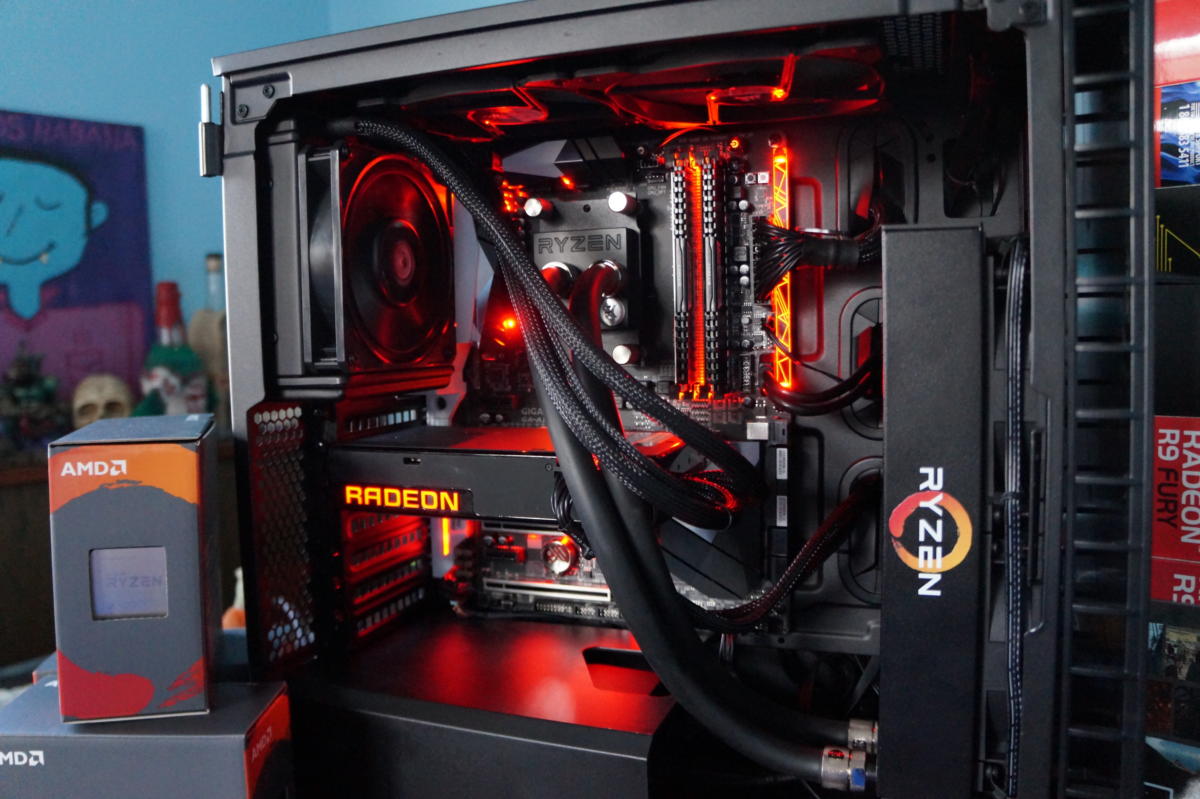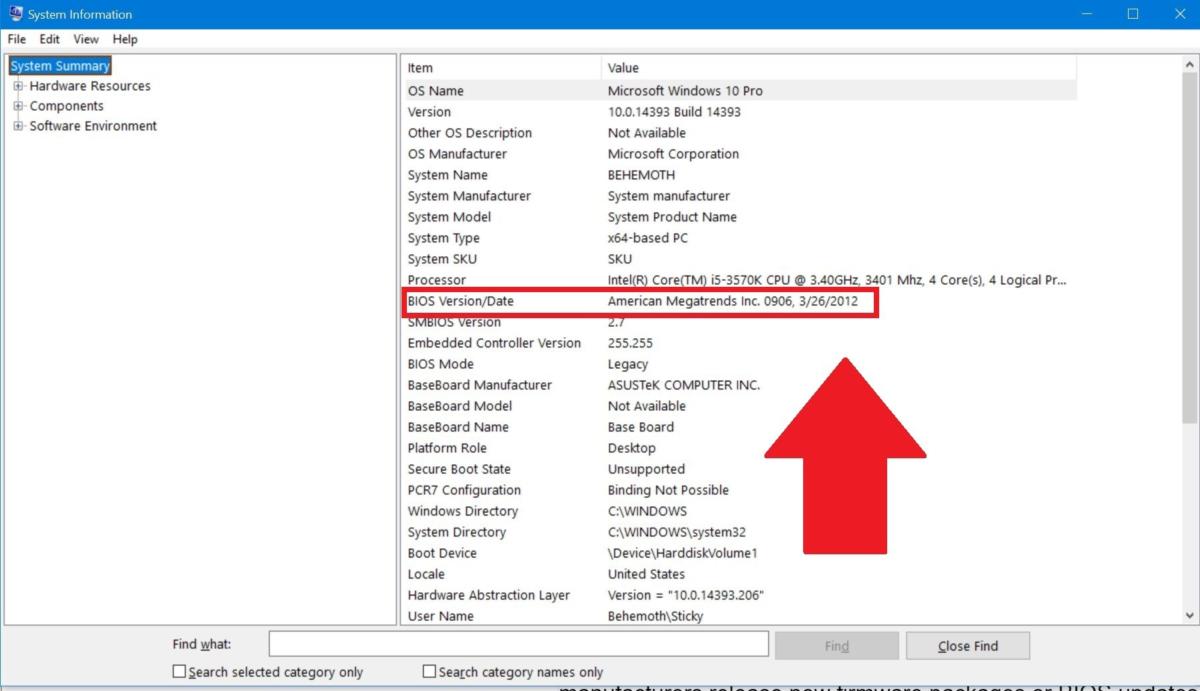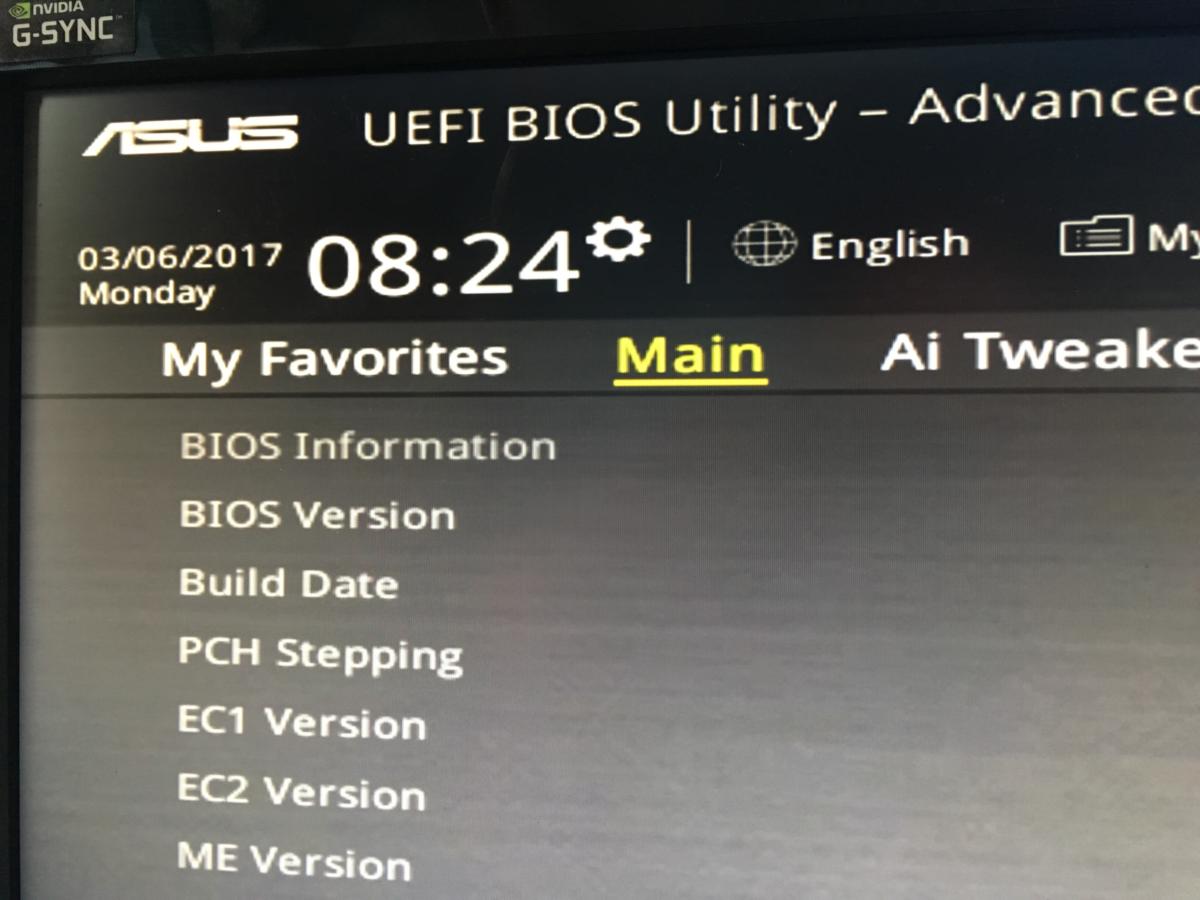How To Upload Firmware To A Motherboard
A tiny BIOS chip lurks inside every calculator, sitting on your motherboard to breathe life into your system when y'all press the power push button. It non only powers your PC, but helps protect information technology, also—as Duo Security'southward recent report on Apple macOS attacks points out.
BIOS stands for basic input and output arrangement, and the BIOS bit initializes all the other devices in your PC, like the CPU, GPU, and motherboard chipset. But a few years ago, motherboard manufacturers—in partnership with Microsoft and Intel—introduced a replacement for traditional BIOS chips dubbed UEFI (Unified Extensible Firmware Interface).
Most every motherboard shipping today has a UEFI chip rather than a BIOS fleck (UEFI is a Windows eleven arrangement requirement, in fact), just they both share the same core purpose: preparing the arrangement to boot into the operating system. That said, almost people still call the UEFI the "BIOS" because of the familiarity of the term.
Why you lot should (or shouldn't) update your BIOS
Understanding your UEFI is important so y'all can empathize how (and if) to accept advantage of the feature updates and problems fixes that come with the BIOS updates offered by motherboard manufacturers.

New chip and motherboard platforms oftentimes receive numerous BIOS revisions early in their lifecycle, to work out bugs.
Your motherboard likely uses whatever firmware revision the motherboard manufacturer was on back when it was built. Over the lifespan of a motherboard, manufacturers release new firmware packages or BIOS updates that volition enable support for new processors and memory, or solve commonly reported bugs. For years, the only existent reason to update to a newer firmware revision, however, is to solve a bug in your UEFI or to swap in a CPU that's newer than your motherboard.
Some people like to regularly check for and update their UEFI firmware packages but to stay up to date. At in one case, this was considered a risky exercise, given that the firmware updating procedure can potentially brick your motherboard in the same way that flashing a custom ROM on to Android telephone tin can brick the device. Information technology'southward all-time not to update your UEFI firmware unless at that place is something specific that the updated firmware offers that you need.
That said, you probably desire to stay on tiptop of BIOS updates if you lot're on a chip or motherboard platform that's fresh out of the gates. Several motherboard BIOS updates were released early during the first generation of AMD's confusing Ryzen fries, and each provided additional performance and system stability. With Intel's Alder Lake switching to a radical new hybrid cadre flake pattern this fall, and both Intel and AMD expected to roll out new motherboard sockets next generation, nosotros may soon be an era where it's more common to update your BIOS while haemorrhage-edge kinks get worked out.
How to update your PC BIOS

1. Find your electric current BIOS version: Before y'all upgrade your BIOS, make certain you're actually installing a new version. The easiest way to find your BIOS version is to open up up the Organisation Information app by typing msinfo into the Windows search bar. In the window that opens, your BIOS version should show up on the correct, under your processor speed. Tape your version number and date, and so compare it to the latest version bachelor on your motherboard's support page on the manufacturer's website.
2. Enter the UEFI BIOS: When you boot upwardly your PC, yous'll see text that informs you which button to printing to enter the UEFI BIOS. Press it! (The verbal button needed, and the blueprint of every motherboard's actual UEFI control console differs, so these instructions will be more guideposts than step-by-footstep instructions.)
3. Kick into the UEFI control panel (when possible): Although not all motherboards offer this characteristic, on certain models you lot tin boot into the UEFI command panel and utilize a built-in update utility to connect to the internet and flash the latest firmware from the manufacture's server. This extremely nice feature makes updating to newer firmware revisions as painless every bit possible.
The process is a fleck more involved for motherboards that don't support this feature.

4. Detect the latest BIOS update from your motherboard's support page: Go to your motherboard'southward support folio on the manufacturer'southward website. The latest BIOS update should be in the support and downloads department.
5. Download and unzip the BIOS update file
6. Transfer update file onto a USB flash bulldoze
seven. Reboot your computer into the UEFI control console
eight. Launch the UEFI's firmware update tool or flashing tool and support your PC's existing firmware to your wink bulldoze: This protects you in case something goes incorrect.
9. Apply the same UEFI utility to select the new firmware image you saved on the flash drive: Running the firmware update utility should take just a couple of minutes, but make sure not to shut off your PC during this process. This is critical .
10. In one case the flashing process finishes, restart your estimator: Your updated PC BIOS is fix to stone.
Some manufacturers offering utilities that can update your UEFI fleck from directly within Windows by running an .exe file, just we strongly recommend using i of the two methods above to avoid whatsoever bug.
Again, updating your PC's BIOS can provide many benefits, but it'south important to sympathise the risks. Don't touch it if there isn't a clear, compelling reason to update your UEFI firmware. That said, if you lot desire to drop in a newer CPU into an older motherboard, then it's articulate that a BIOS update lies in your future.
Updated at 10:46 AM to reference Duo Security's recent study on UEFI attacks on the Apple Macintosh and MacOS.
Note: When you purchase something afterwards clicking links in our manufactures, we may earn a small commission. Read our affiliate link policy for more details.
Source: https://www.pcworld.com/article/516379/how-to-update-your-bios.html
Posted by: ostlundjoind1977.blogspot.com

0 Response to "How To Upload Firmware To A Motherboard"
Post a Comment